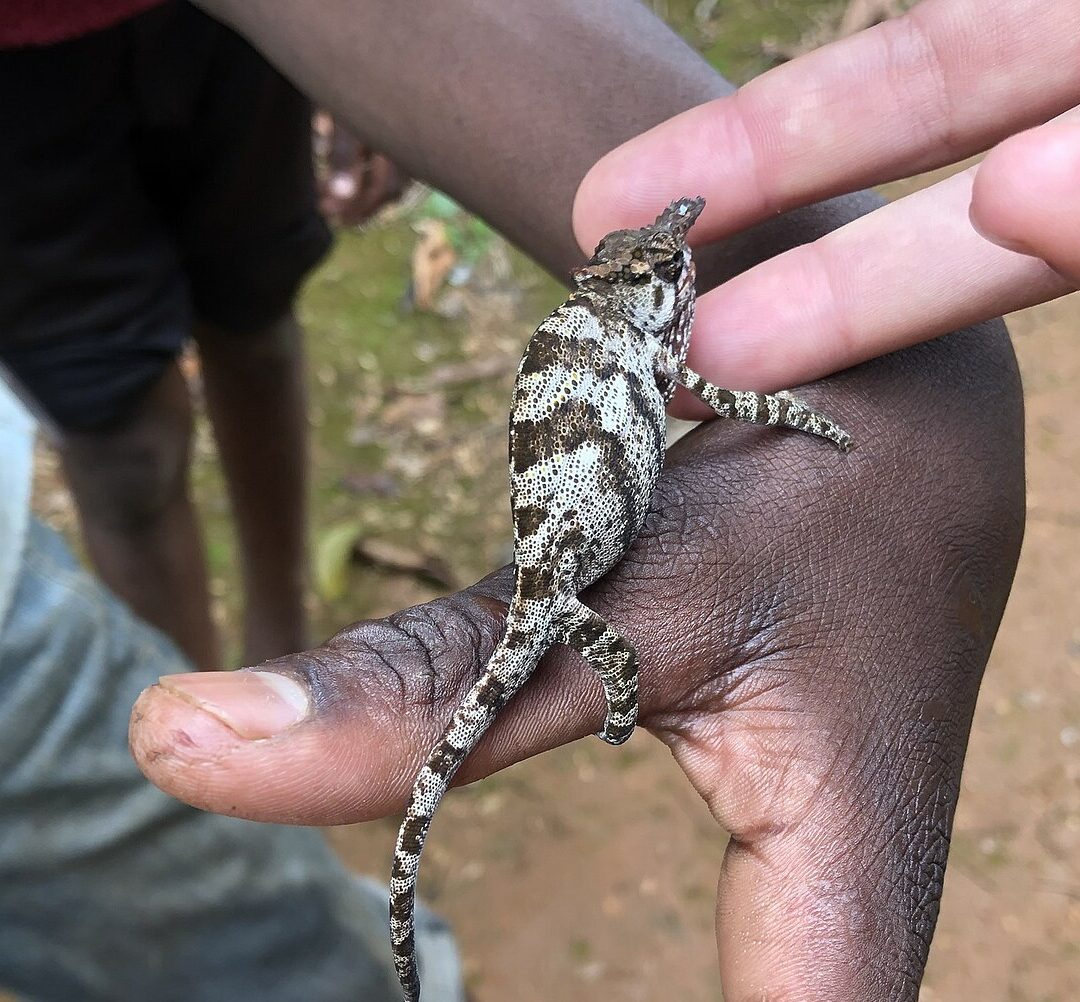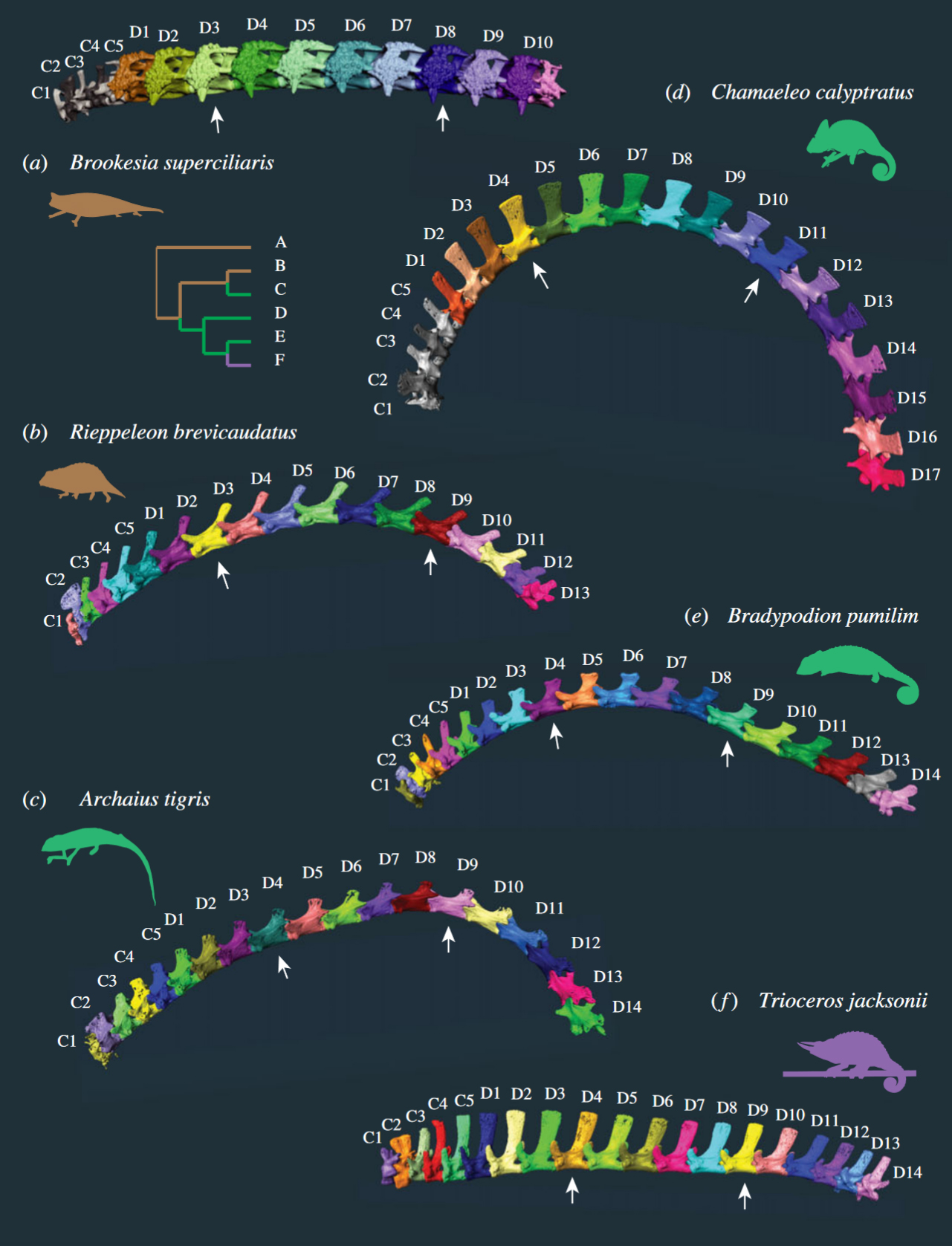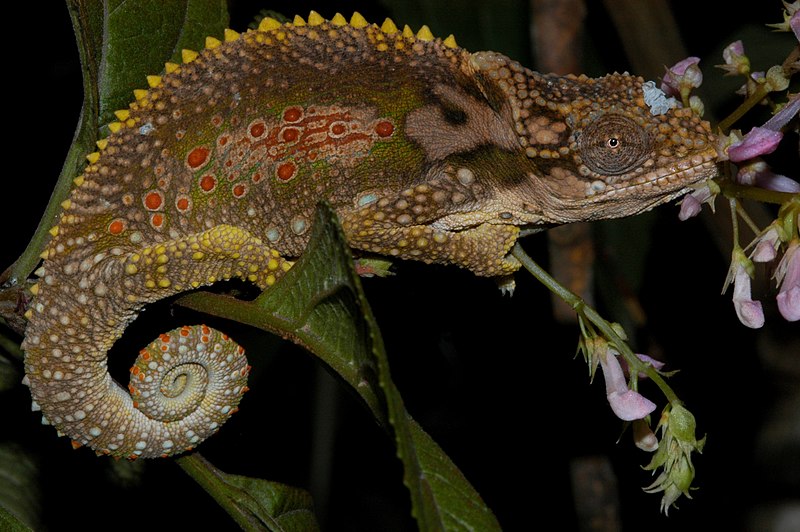Researchers from several universities recently analysed the international trade in chameleons. The focus was on Tanzania in East Africa. Tanzania is currently home to 41 of the 228 known species, making it the country with the second-highest number of chameleon species after Madagascar.
The study was based on the publicly accessible CITES trade database and the annual reports of the countries participating in the Washington Convention on International Trade in Endangered Species of Wild Fauna and Flora. Chameleons exported for scientific or non-commercial purposes were excluded. In addition, the most frequently clicked websites on the Internet in the form of English-language sales platforms, social media and forums were searched for sale and purchase adverts for chameleons using Google and “[species] for sale”. A total of 14 websites of commercial sellers, two online forums, two advertising websites, four social media sites and seven closed groups in social media were analysed. As a third pillar of the study, villagers in the Eastern Arc Mountains in Tanzania were interviewed using a questionnaire with eleven questions.
The general result of the study is that the international trade in chameleons fell rapidly between 2000 and 2019. At the same time, the number of chameleons bred in captivity increased. The number of “ranched” chameleons, i.e. chameleons bred on a farm in the country of origin for export, fell slightly. The largest export factor was commercial trade, with almost all species being exported directly from their countries of origin and not via other intermediaries in other countries. From 2000 to 2019, a total of 327,522 chameleons were legally traded. Only six countries accounted for 91% of exports: Tanzania, Madagascar, Mozambique, Uganda, Ghana and Cameroon. Tanzania was the country from which the most chameleons were traded, accounting for 34% of all exports. The country to which most chameleon exports went was the USA with 46%. The USA thus received almost half of all chameleons traded under CITES worldwide between 2000 and 2019. Other countries with relatively high numbers of chameleon imports were Japan (13%) and Germany (10%).
Six chameleon species from Tanzania were particularly sought after. Together they accounted for 85% of the trade in chameleons in the period mentioned. Kinyongia fischeri and Kinyongia tavetana were exported most frequently, followed by Trioceros werneri, Trioceros deremensis and Trioceros fuelleborni. Of the 42 species occurring in Tanzania, 35 were found for sale on online platforms and 29 were regularly on sales lists.
The on-site surveys in Tanzania revealed that only two out of three mountain ranges observed had participated in the trade in chameleons (East Usambara and Uluguru). As Tanzania has suspended its exports indefinitely since 2016, the majority of respondents stated that there is currently no longer any trade in chameleons. Interestingly, the villagers stated that they had collected 13 species for trade, but 7 of these species never appeared on the official exports for Tanzania. The answers to the question of how many chameleons of which species were traded also differed significantly from the official figures in the perception of the local population: While locals reported “thousands” of chameleons with one horn as supposedly collected annually, only very isolated ones of these were actually exported. There may also be a strong divergence here due to a lack of species differentiation.
Trade routes in Tanzania could be traced quite well through the interviews. In general, traders from Muheza and Morogoro came to the Usambaa and Uluguru mountains and gave the villagers a desired number of certain species (selected according to “one horn, two horns, three horns or giant”). A time limit was set, after which the traders returned and transported the collected chameleons to Dar es Salaam for export. One trader was questioned more intensively and stated that his father had already traded in chameleons. He had also never seen a collection permit, even though his clients always emphasised that they had one. The middlemen and collectors had no interest in what the collected chameleons were to be used for, only what was paid for them. Even a middleman only received 0.4 US dollars per chameleon.
Status and trends in the international wildlife trade in Chameleons with a focus on Tanzania
Maxim Conrad Isaac, Neil D. Burgess, Oliver J.S. Tallowin, Alyson T. Pavitt, Reuben M. J. Kadigi, Claire Ract
PLoS ONE 19(5), 2024.
DOI: 10.1371
Picture: Kinygonia tavetana, photographed by Elizabeth Dougherty, Creative Commons Attribution 4.0 International




